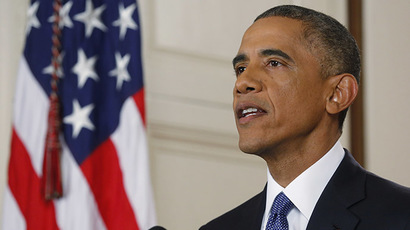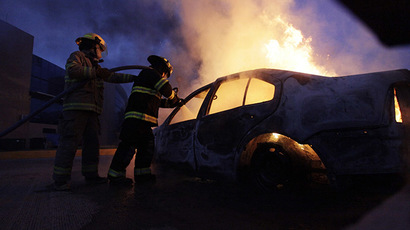Body cameras reduce police use-of-force, citizen complaints - study
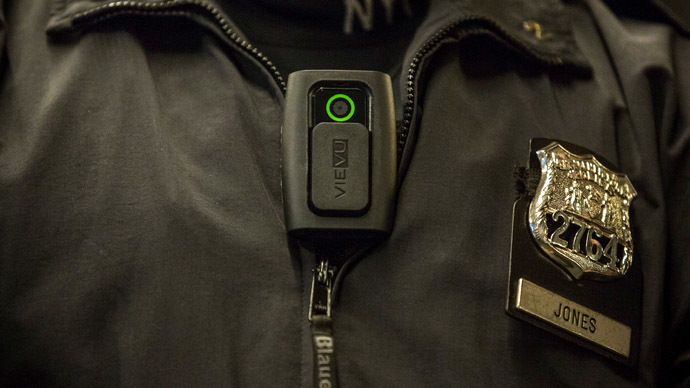
A recently published experiment using a California police department is the first full scientific study to focus on how body cameras affect interactions between the public and law enforcement officials, researchers say.
The experiment was conducted by the University of Cambridge’s Institute of Criminology (IoC), on the Rialto Police Department in California, where one of the authors, William A. Farrar, is the police chief.
“The study focused specifically on use-of-force and citizens’ complaints, which were hypothesized to be affected by officers wearing cameras, given the possible deterrent effect of the devices on noncompliant behavior,” the authors wrote in their introduction.
“The publicity [about body cameras] has been so great that many go on to assume that cameras can fundamentally change ‘flawed’ police practices,” they noted, explaining the reasoning behind the experiment. “Despite great promises, there is no research evidence on the benefits of body-worn-cameras.”
Over the course of a year, from February 2012 to February 2013, the mid-sized police department of 115 officers participated in the experiment in Rialto, a city of 100,000 residents. All police shifts were randomly assigned to be either experimental ‒ wearing body cameras ‒ or control, meaning the officers on that shift did not wear cameras, the study authors reported in their initial analysis of the data.
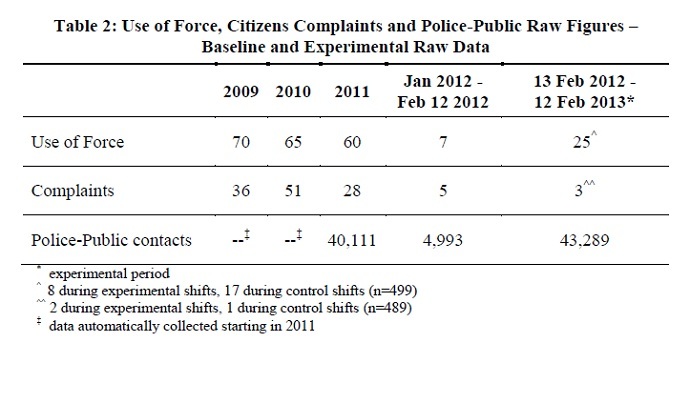
The devices, made by Taser International, employ a “pre-event video buffer,” which continuously records and holds the most recent 30 seconds of video when the camera is off. As a result, the initial activity that prompts the officer to turn on the camera is more likely to be captured automatically, The New York Times reported last April.
The technology is "surely promising, but we don't know that it's working," Dr. Barak Ariel, the study’s lead author and an IoC fellow, told the Atlantic’s Uri Friedman. The Food and Drug Administration doesn't approve drugs until they've been studied extensively, he explained, and governments should take a similar approach with body-worn cameras. It's a solution that has yet to be proven.
Body cameras are an “important, productive step forward,” said Ron Hosko, president of the Law Enforcement Legal Defense Fund and a former assistant director of the FBI, according to the International Business Times. However, he said, “we are in an experimental phase with physique cameras and...there is still a lot to be learned from them.”
READ MORE:LAPD becomes first major police force to equip all officers with body cameras
Experts increasingly say that body cameras are likely to become an industry standard over the coming years, just as cameras in patrol cars - which once prompted similar objections about privacy - have become commonplace in recent decades, the Times reported in 2013.
That prediction is coming to fruition with President Barack Obama’s announcement at the beginning of December that he will seek $263 million in order to better train police officers – and a large chunk of that money will fund the purchase of roughly 50,000 body cameras for the roughly 750,000 cops across the country. The proposal came in response to protests over the shooting death of unarmed teenager Michael Brown in Ferguson, Missouri this summer by Officer Darren Wilson, who was not wearing a body camera during the confrontation. Protests increased in November, after a grand jury did not bring charges against the policeman.
The Rialto study found that police officers who weren't wearing cameras were twice as likely to use force as those who were. During the 12-month experiment, the police department also saw a reduction in citizens' complaints compared with previous years, from 0.7 complaints per every 1,000 police contacts with the public to 0.07 complaints per 1,000 contacts. The researchers concluded that the benefits of wearing cameras trumped the costs. But Ariel insists that there isn't enough evidence so far to generalize the finding and assert that body-worn cameras offer a net benefit to community policing.
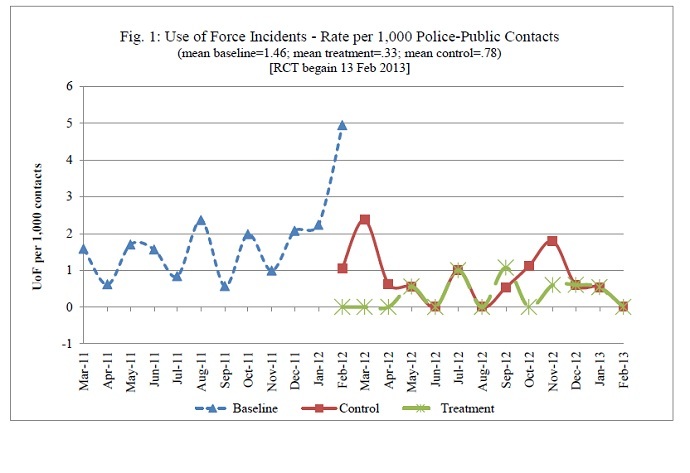
William J. Bratton, who has led the police departments in New York and Los Angeles, said that if he were still a police chief, he would want cameras on his officers.
“So much of what goes on in the field is ‘he-said-she-said,’ and the camera offers an objective perspective,” Bratton told the Times. “Officers not familiar with the technology may see it as something harmful. But the irony is, officers actually tend to benefit. Very often, the officer’s version of events is the accurate version.”
Video and Eric Garner
But in the case of Eric Garner, a Staten Island man who died when NYPD Officer Daniel Pantaleo placed him in a banned chokehold, video footage of the incident captured by a witness led to outrage against the officers involved - yet a grand jury declined to indict Pantaleo.
“The ‘preventative treatment’ of body-worn-video is the combination of the camera plus both the warning and cognition of the fact that the encounter is being filmed. In the tragic case of Eric Garner, police weren’t aware of the camera and didn’t have to tell the suspect that he, and therefore they, were being filmed,” Ariel said in the Cambridge statement.
“With institutionalised body-worn-camera use, an officer is obliged to issue a warning from the start that an encounter is being filmed, impacting the psyche of all involved by conveying a straightforward, pragmatic message: we are all being watched, videotaped and expected to follow the rules,” he added.
READ MORE:St. Louis police release footage of fatal Berkeley shooting
The research team cautioned that the Rialto experiment is only the first step on a long road of evidence-gathering, and that more needs to be known about the impact of body-worn cameras in policing before departments are “steamrolled” into adopting the technology. The authors are currently researching the effects of body cameras on policing everywhere from Brazil and Ghana to Israel and Northern Ireland. They are hoping to replicate the Rialto experiment by studying over 30 forces, and aim to announce new findings at the IoC’s Conference for Evidence-Based Policing in July 2015. Early signs match the Rialto success, a Cambridge statement announcing the study’s publication said.
“When you put a camera on a police officer, they tend to behave a little better, follow the rules a little better,” Farrar told the Times in August 2013. “And if a citizen knows the officer is wearing a camera, chances are the citizen will behave a little better.”
Potential Drawbacks
In the study’s cost-benefit analysis, the researchers found that every dollar spent on the cameras saved about four dollars on complaints litigation. However, the sheer levels of data storage required as the cameras are increasingly adopted has the potential to become crippling, they said.
“It’s definitely not cheap,” Paul Figueroa, an assistant chief with the Oakland Police Department, told the Times. “But over the long term, just from a liability and management perspective, it’s definitely an investment that’s worth it.”
There are other concerns as well, such as privacy, how and when data can be used, and the credibility of police testimony without corroborating video evidence.
READ MORE:LAPD body camera footage won’t be released to the public
Ariel gave the example of a traffic cop who spots an infraction out of the corner of his eye, and then can't produce body-worn video of the episode. In that scenario, a judge could toss out the case for lack of evidence. "That has serious implications for policing and the status of officers' testimony and statements in the court of law," he said to Friedman.
The American Civil Liberties Union has raised concerns about the technology's potential to invade the privacy of citizens, such as bystanders and victims. "Probably most troubling is that some recordings will be produced inside people’s homes, anytime police enter — including in instances of consensual entry...and such issues as domestic violence calls," the organization said in a statement.
Ariel believes the questions about body cameras are issues that each jurisdiction’s legal system will have to sort out. For his part, Farrar invested in body cameras for the whole force after the experiment ended last year, but before it was published in November.













